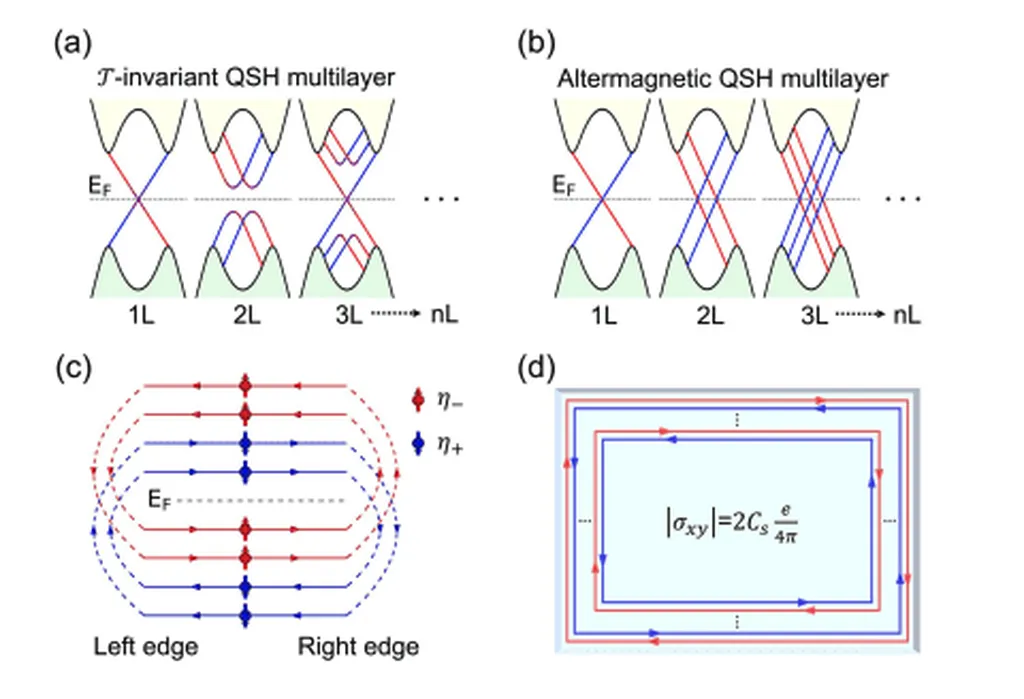In the realm of quantum materials, a recent study has shed light on the unique properties of α-MnTe, a type of collinear antiferromagnet that has piqued the interest of researchers due to its unusual magnetic behavior. This phenomenon, dubbed “altermagnetism,” is characterized by significant spin splitting despite having net zero magnetization, a trait that could have profound implications for the energy sector.
At the heart of this research is Koichiro Takahashi, a physicist from the University of New Hampshire, who led the study published in the journal ‘npj Quantum Materials’ (which translates to ‘New Journal of Quantum Materials’). Takahashi and his team developed a minimal effective Hamiltonian for MnTe, a mathematical model that describes the behavior of electrons in the material. This model is based on group representation theory, first-principles calculations, and tight-binding modeling, providing a comprehensive understanding of MnTe’s electronic properties.
The study revealed that the Hamiltonian exhibits distinct electron transport characteristics at different high-symmetry points in the material’s crystal structure, namely the Γ and A points. Moreover, these characteristics vary depending on the orientation of the in-plane Néel vector, which is a measure of the antiferromagnetic order. “This is a significant finding,” Takahashi explains, “as it shows that the electronic properties of MnTe are highly sensitive to its magnetic configuration.”
One of the most surprising findings of the study is the dominant role of spin–orbit coupling (SOC) in the spin splitting and valence electrons of MnTe. SOC is a relativistic effect that couples the spin of an electron to its orbital motion, and it is typically considered to be weak in altermagnets. “Our results challenge this conventional wisdom,” says Takahashi, “and suggest that SOC may play a more important role in altermagnets than previously thought.”
The implications of this research for the energy sector are substantial. Altermagnets like MnTe could potentially be used to develop more efficient and compact spintronic devices, which are electronic devices that exploit the spin of electrons rather than their charge. These devices could revolutionize the way we store and process information, leading to significant energy savings and improved performance.
Furthermore, the study provides a model playground for future theoretical and experimental studies, paving the way for further exploration of altermagnetism and its potential applications. As Takahashi puts it, “Our work is just the beginning. There is still much to learn about altermagnets, and we are excited to be at the forefront of this exciting field.”
In conclusion, this research highlights the importance of understanding the fundamental properties of quantum materials and their potential applications in the energy sector. As we continue to explore the mysteries of altermagnetism, we may unlock new technologies that could transform our world.

